Content

Russian Costume and Culture.
Provincial Russia. Painted by F. De Haenen. Described by G. Dobson, H.M. Grove, and H. Stewart. Published by Adam and Charles Black, London 1913.
Provincial Russia.


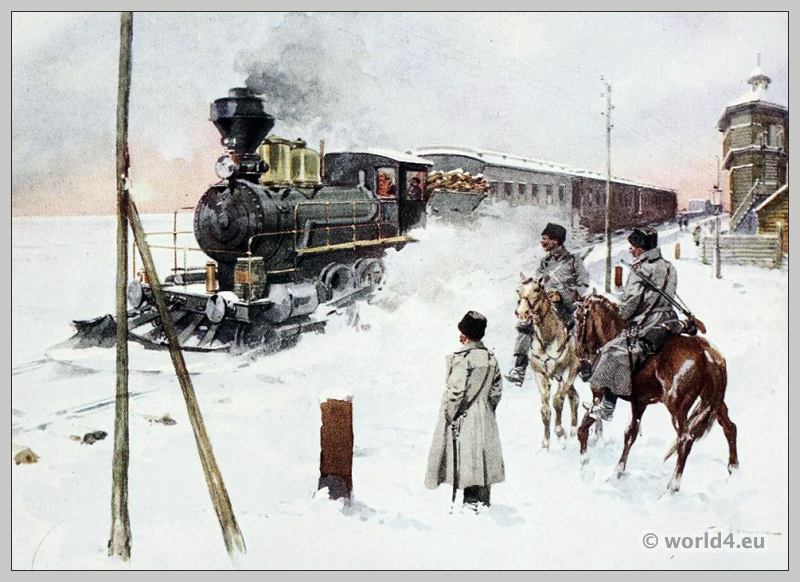




















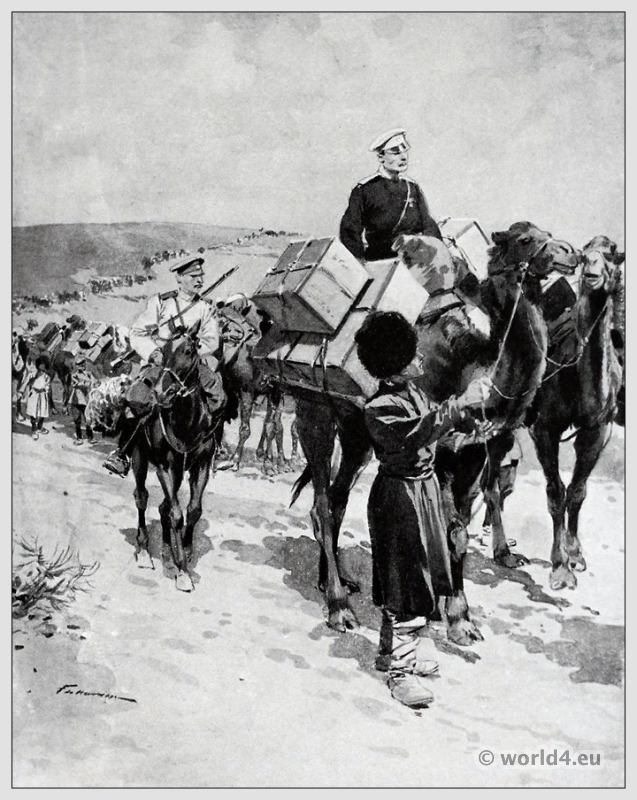
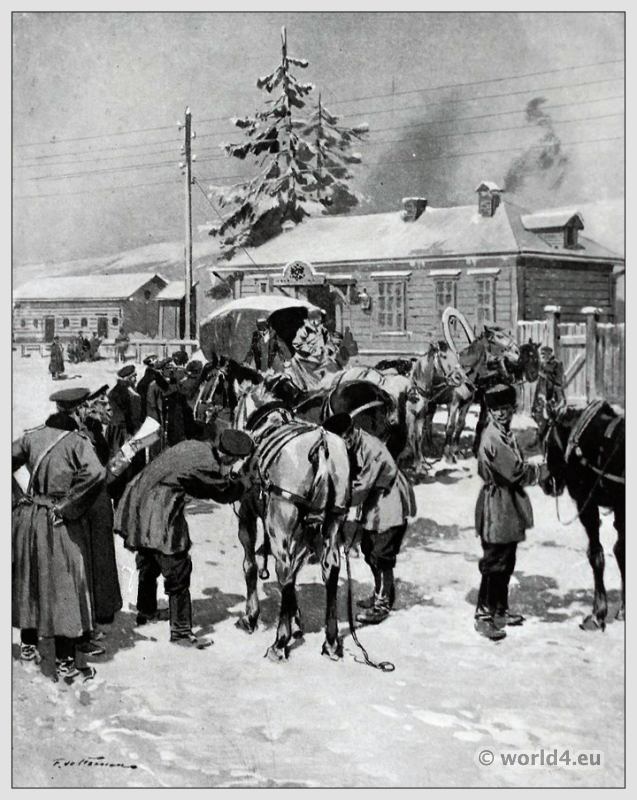







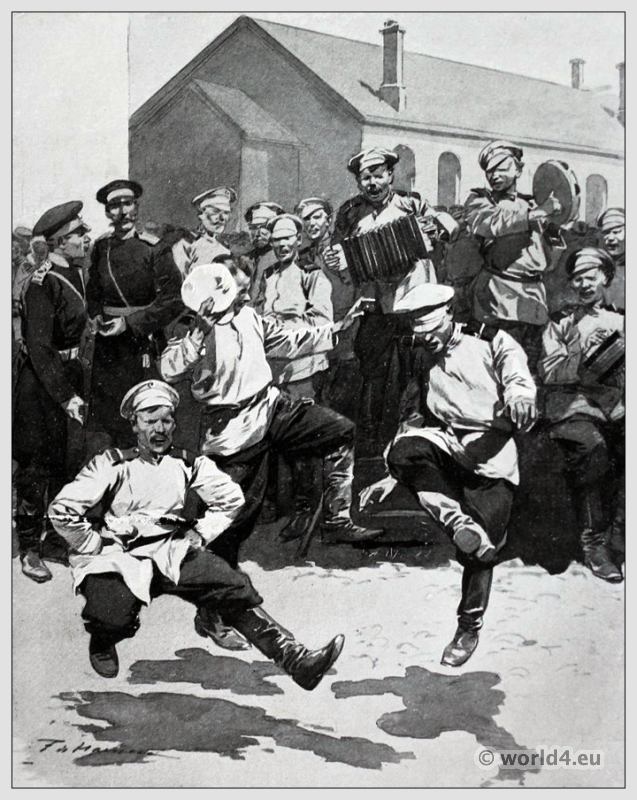


















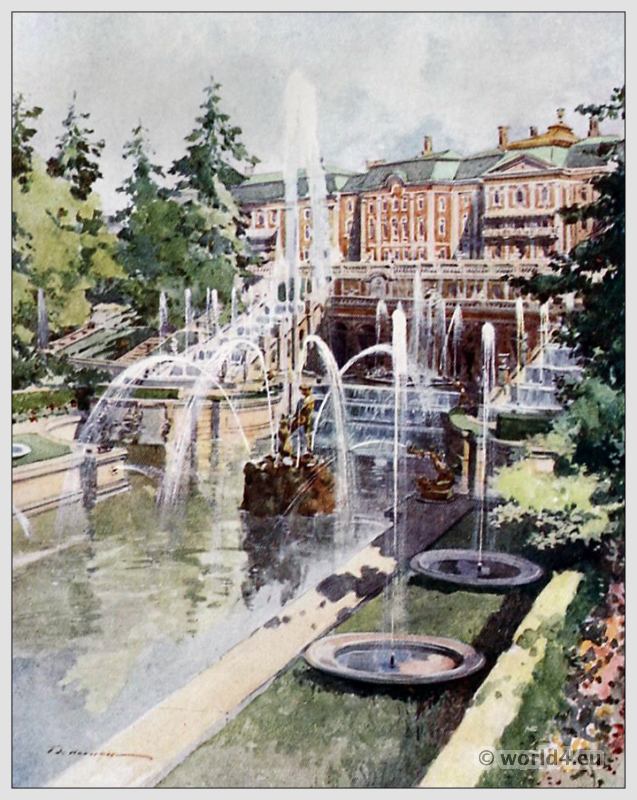










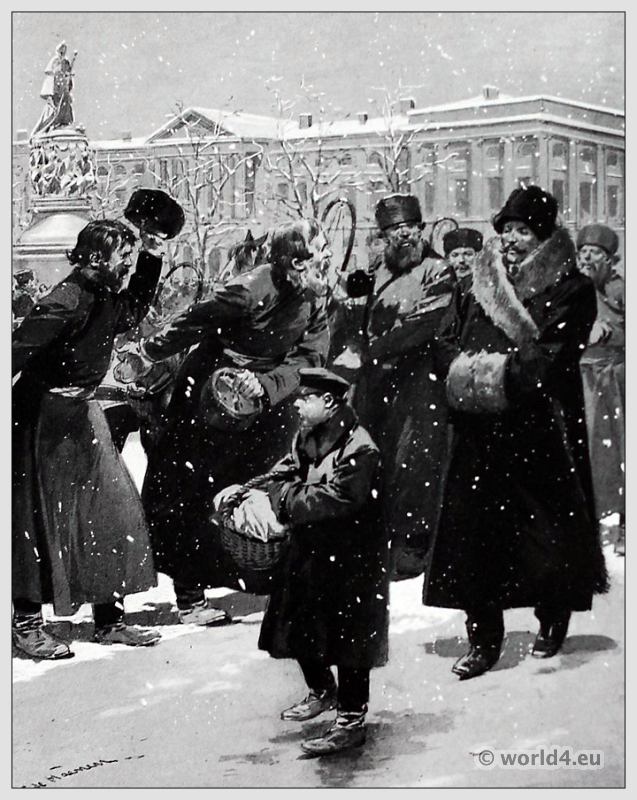




























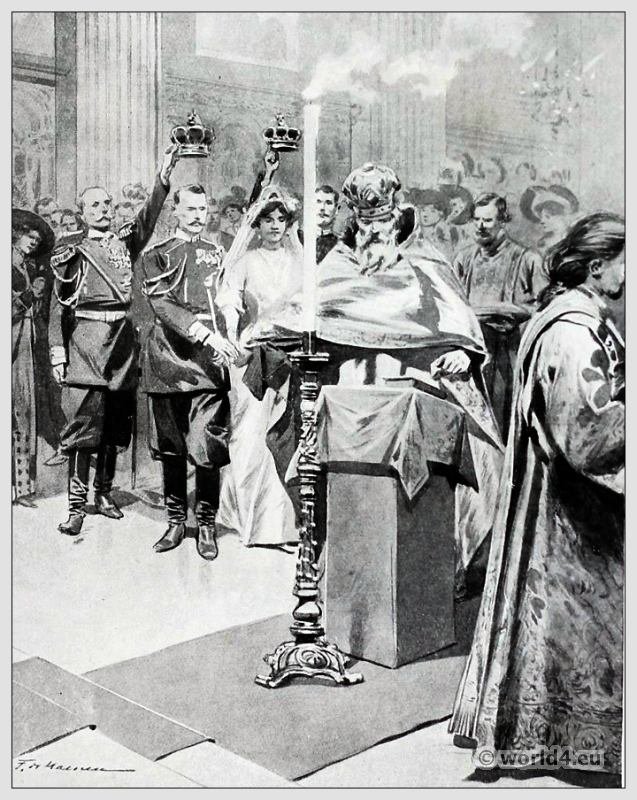



Chapter I.
CENTRAL RUSSIA
It was in the south-west, in the basin of the Dnieppr, the great waterway between Scandinavia and Constantinople, that the Russian State had its first beginnings. Kieff, and not Moscow, is the real ‘ mother-city.’
But from the fourteenth century Russian history has centred round the ‘white-stoned’ town on the Moskva, and the principal part in the national development has been played by the Muscovites, or Great Russians. In numbers and importance these by far exceed the other two families of the Russian race, the White and the Little Russians.
It was the Muscovite Princes that emancipated Russia from the Tartar yoke. It was the Great Russian stock that, possessing a remarkable instinct and aptitude for colonization, sent forth successive swarms of emigrants to the northern forests and the fertile steppes in the south, and that alone of all Slavonic peoples have built up a powerful empire in face of very considerable difficulties.
Their religion, their form of government, and their language, they have stamped on the whole nation. In the course of expansion they have absorbed a considerable number of Finnish peoples.
While it would be a mistake to infer that the predominant characteristics of the Great Russians are anything but Slavonic, it seems probable that to this infusion of Finnish blood, and not altogether to the more rigorous Northern climate, are due certain modifications of the Slavonic type which are peculiar to them.
They have lost in liveliness and gained in strength. They have more endurance and energy, more perseverance and patience, than the Little or White Russians. In physique they are less graceful, but more rigorous.
This prolific stock, endowed with inexhaustible reserves of strength and recuperative powers, has spread in every direction of the empire, adapting itself with peculiar readiness and success to new conditions, but at the same time preserving all the customs that could possibly be retained.
Thus, the traveller in Russia will notice a certain sameness in peasant life from Archangel to Astrakhan the same village plan, the same type of houses, of clothes and manners, a sameness which is accentuated by the similarity of the scenery. But variations do arise under the influence of a novel environment, and Russian writers are careful to distinguish between the character of the central peasants and that of the people in the north and in the Urals.
The original type is best seen in the central governments in the basin of the River Oka, which for long was a political and ethnological frontier.
This river, one of the great rivers of Europe, has its source in the Government of Oryol (Oryol was an administrative division (a guberniya) of the Russian Empire, which existed from 1796 to 1928.), and meets the Volga at Nijni. Its basin is intimately connected with Russian history, and comprises to-day the most populous and most highly developed district in the whole empire.
Nowhere is the web of railways closer, nowhere are more people engaged in manufacturing industries. Yet even here the overwhelming majority of the inhabitants are peasant agriculturists. First, then, a word as to the appearance of the country, and this, the reader will remember, applies to rural scenery in Russia generally.
Sluggish rivers, with steep red banks, wind through broad plains. In the distance are dark woods of pines or birches, which in the evenings resound with the notes of nightingales. The unfenced communal fields slope gently towards the horizon, and through them, also unfenced, runs the broad stoneless road with deep ruts. There is no strongly marked feature in the landscape.
The predominant colour is in summer grey or brown. In spring it is bright, almost dazzling, green, and in winter practically unrelieved white. The feeling of space, of distance, which the people call their great enemy, impresses itself strongly on the mind ; all round for a thousand miles is Russia.
There are generally no separate homesteads—a feature that must, however, alter largely in no long time, owing to the agricultural reforms inaugurated by M. Stolypin’s Government, that aim at establishing the individual and independent farmer, and hence project a revolution of a peaceful but most momentous nature. With the exception of bee-keepers, charcoal-burners, and foresters, whose occupations oblige them to dwell in the woods, the peasants all live in villages.
Those whose strips of corn lie at the outskirts of the mir land, often ten or fifteen versts (It is defined as being 500 sazhen long, which makes a verst equal to 1.0668 kilometres (0.6629 miles; 3,500 feet) from their homes, will spend in harvest-time the nights in the open, and their little fires will twinkle over the fields.
Great Russian villages vary little from each other, except in size. Occasionally there are rows of trees relieving the monotony of the straight, regularly-built streets, and close by, surrounded by pleasant grounds, there may be a landowner’s long one-storied wooden house, with the men’s apartments at one end, the women’s at the other, and the public rooms in the centre.
But most villages are treeless, and, apart from the church, a merchant’s stores, the Zemstvo or Local Government Board school, and sometimes a hospital, consist exclusively of the wooden izbas of the peasants. They are surrounded by a wattled fence, which lies far enough off to leave a pasture ground for the cattle. Where the road meets this fence there is a rough wooden gate, with a small hut to shelter the old man who looks after its fastening.
A little farther on there is a signpost giving the name of the village and the number of its ‘ souls,’ or male inhabitants. High over the izbas rises the white church, with its cross and green cupolas. On the orthodox cross the slanting position of the lowest transverse bar is determined by the old Eastern tradition that Christ was lame. In the Greek religion Zeus took to himself the attributes of mental suffering, and identified him self, for example, with the supplant.
But the Russians in their broad humanitarianism have gone farther. They have not shrunk from making their God physically deformed, alone of Christian peoples following literally the words of Isaiah: ‘ For He hath neither form nor comeliness.’ So at least a Slavophil might urge, but the notion would be present, if at all, only very dimly in the average Russian mind. Close by the church stands the high belfry. The bells are rung from a little platform near its sunnnit, and generally have a pleasant note. On still summer evenings their pealing tones echo musically far over the fields and woods.
Excerpt from the book: PROVINCIAL RUSSIA.


